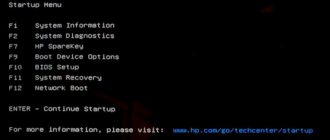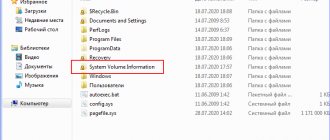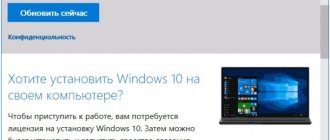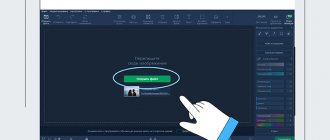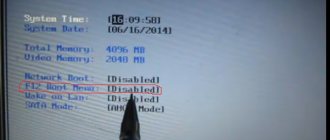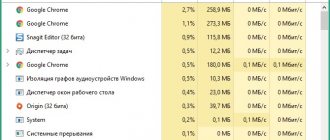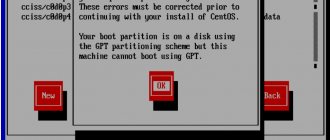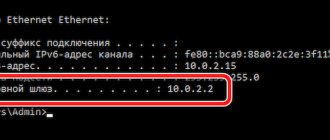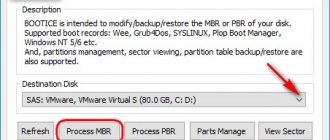Nowadays, most laptops and desktop PCs are increasingly being released with the Windows 8 operating system pre-installed. After the release of the Windows 8 OS, due to its focus on portable touch-screen PCs, it was subjected to serious criticism among computer users. Therefore, many people, after purchasing a new PC with Windows 8 pre-installed, increasingly began to think about returning to the seven. In this material we will look in detail at how to install windows 7 instead of windows 8 , and how to go back . of replacing version 8 with XP has also been considered .
Necessary recommendations before changing eight to seven
Before installing seven over eight, you should find out about driver support for your computer by the manufacturer. Increasingly, manufacturers of new motherboards began to abandon driver support for Windows 7 in favor of the 8th and 10th versions. This is extremely rare for desktop PC motherboards, but many laptop often do not release drivers in new models for Windows 7 and especially XP.
For example Aser Aspire S7 ultrabook has support for one and only Windows 8.1 OS, 32-bit and 64-bit versions. And the latest motherboard for desktop gaming PCs from BIOSTAR Completes GAMING Z170X has driver support for both 7 and 8, but does not have XP.
The new ASRock FM2A88M Extreme4+ R2.0 motherboard, unlike the BIOSTAR GAMING Z170X, has support for operating systems from XP to Windows 10.
You should know the details of driver support for the device you are purchasing so that Windows 7 will work for you when you buy a new computer.
All information about driver support can be found on the official websites of computer manufacturers . For example, for the BIOSTAR GAMING Z170X motherboard you can download drivers on its official page https://www.biostar.com.tw/app/ru/mb/introduction.php?S_ID=807#dl
Before installing Windows 7, you must back up all your data.
Backup data means all documents, MS Office files, photos, music and movies. For backup, you will need a portable HDD or flash drive with a large capacity. Of course, you can dump all the files onto a free local drive and not use a flash drive or portable HDD. But then the hidden partition that the seventh version of the OS creates when installing it will not be created. This hidden " System Reserved " partition is necessary to protect the OS boot files.
If you have checked your computer for compatibility with Windows 7 and have backed up all important data, then you can proceed to directly reinstall the OS. How to make a backup, read further in this article.
Installing drivers
There shouldn’t be any problems with drivers either, because almost any Windows 7 driver file is installed automatically for most devices during system installation and initial setup.
As a last resort, for unsupported hardware, you can always use a special disk with drivers, supplied when purchasing a computer unit or laptop. At worst, you can go to the official website of the manufacturer of non-standard equipment and find there the latest version of the appropriate driver, designed specifically for Windows 7. You can download it either from another computer connected to the Internet, or after establishing a connection and setting up basic parameters on your own terminal.
As usual, you can identify non-functioning or incorrectly functioning devices in the “Device Manager”, where they are marked in yellow.
Changing Windows 8 to 7
You can install Windows 7 using a licensed DVD or USB flash . In our case, we will use a USB drive. To do this, we will use the utility from Microsoft “ Windows USB/DVD Download Tool ”. To create a USB drive with the seven, you will need an ISO image and a 4 GB flash drive. In the start window of the program, you need to select the ISO image and click Next.
Next, the program will ask you to select a flash drive, after which it will create your bootable drive with the seven.
Please note that all data will be erased from your flash drive.
a BIOSTAR Hi-Fi A85W 3D motherboard . For this motherboard there are drivers for OS starting from XP. The first thing you need to do is boot from the flash drive when the system starts. To do this, press the F9 key at startup. By pressing the key, you will launch the boot menu, in which you need to select a bootable USB flash drive. This example used a PNY Turbo Plus 32GB USB drive with USB 3.0 support.
Next, the installation process will begin, at the first stage of which you need to select language options.
After completing these steps, in the next window, click the Install button. Then you need to accept the license terms and proceed to the next window. In this window you need to select “ Full installation ”.
By selecting this item, you will be taken to the window for creating partitions for Windows. Delete old Windows 8 partitions and create new ones for later installation.
Please note that when you delete sections, all information is deleted.
Clicking Next will begin the installation.
During the installation process, you must enter your username and computer name.
Next, if necessary, enter a password to protect your account.
In the next window, enter the license key for your copy of Windows 7.
Next, select the first item, which will make the system most secure.
Now all that remains is to select the final date and time parameters.
By clicking Next, the installation will complete and you will see the familiar Windows 7 desktop.
Having completed the installation, you can begin installing drivers, which, as previously written, can be downloaded from the official websites of computer manufacturers. After installation , turn on automatic updates and ensure that all important security updates are downloaded and installed successfully.
How to fix error 651 Windows 8: Video
Reinstallation using built-in tools
You must understand that this method is just a return of the system to its initial state. That is, in fact, you do not reinstall the system, but roll back to its original state. If you are satisfied with your OS, but errors and glitches constantly pop up while using it, then this method of reinstalling Windows 8 is just for you.
So, move your cursor to the upper right corner of your desktop and when the menu appears, select Settings.
After that, select “Change computer settings.”
In the system settings, we are interested in the “Update and Recovery” section. Here select "Recovery".
Here you will see several options for further actions:
- Recover your computer without deleting files (all data will be saved).
- Removing all data and reinstalling Windows.
- Special download options.
In our case, you should select the second option “Delete all data and reinstall Windows.”
This process should not be confused with recovery. Although the procedure is similar, they are still different things. There is no need for a restore point here. Read how to perform a system restore on Windows 8 here.
This option allows you to completely delete all entries and return the operating system to its original state. You will get the same thing when you reinstall Windows 8 using a bootable USB flash drive or DVD.
So, click the “Start” button in the appropriate section. Next, just carefully read the instructions on the screen and follow all the requirements. It’s only worth noting that for a complete reinstallation during the process, you will need to select “Do not save anything” and then “Only the partition on which Windows is installed.”
Do not save anything - this means that you will return the computer to its original state. All files, folders, etc. will be deleted from the hard drive. Selecting the line “Only the partition on which Windows is installed” will allow you to clean only the hard drive containing the installed OS (exclusively the system partition, for example, drive C). All other sections will remain untouched.
As you can see, everything is quite easy and simple. The second reinstallation option is to create a bootable USB flash drive and install the OS using it.
It's a little more complicated. However, sometimes users simply have no choice. For example, when the system experiences a bootloader failure and the system simply cannot boot. In this case, you have only one option - to reinstall Windows 8 using a bootable USB flash drive (or DVD).
Backup programs
Making backups by copying files to a flash drive or HDD drive can sometimes be a rather lengthy process. Therefore, it is advisable to make backups by making an archive of all the necessary data. Archiving files allows you to reduce the size of your files , as well as speed up the process of transferring to external storage media. For example, you can archive all important information using the free 7zip . This archiver is very popular because it has a high compression ratio and is distributed free of charge. You can download the latest version of the archiver on its official website www.7-zip.org.
In addition to archivers, you can use specialized backup programs. The most interesting programs for backup are the following:
- AOMEI Backupper Standard 3.2;
- Backup & Recovery 14 Free Edition;
- Comodo Backup.
The features of these programs are greater functionality and automation of backup processes.
Consider the backup program Comodo Backup . You can download the free version of this program at https://backup.comodo.com/download-buy.php. After launching the installer, a window will appear in which you need to select a language.
Then we accept the license agreement and go to the window where we click the Install button.
The installation process will begin...
After completing the installation, launch COMODO BackUp from the shortcut on the desktop and go to the main menu of the program.
In the main window, click the Reserve now button and proceed to the next step.
Now you can select four items:
- Files and folders;
- Disks, partitions and MBR;
- Registry files;
- Registry entries.
Each item describes what will be reserved. For example, select the fourth item “ Registry entries ”, add registry keys and continue.
In the window that appears, select the “ My Computer ” tab.
And let's continue.
In the window that appears, you can edit backup settings for optimal size and efficient use of computer resources. After making the settings, click the Backup Now button, which will start backing up the selected registry branch.
As you can see, COMODO BackUp is quite an interesting program that includes many backup options. Another interesting feature of COMODO BackUp is copying backups to the Comodo Cloud . Using Comodo Cloud, you will no longer need portable storage media, since all backups will be stored in the cloud. The capabilities of COMODO BackUp can be described for a very long time, but we can go beyond the main topic of the article.
Changing Windows 8 to XP
Let's look at such an interesting issue as installing Windows XP on Windows 8. Many are familiar with the legendary Windows XP OS, and even now a large number of people continue to use it. the ASRock FM2A55M-DGS motherboard , which has driver support for this axis. To install, we will use the licensed disk “Windows XP Pro sp3 VL”. Let's boot from it at system startup, similar to a flash drive, and move on to replacing the operating system.
In the start window, press the Enter key, and in the next window, accept the terms of the license agreement by pressing the F8 button.
Then, in the window that appears, delete old local disks and create new ones. You can also install XP on a local drive where Windows 8 , which will later remove it during the formatting process.
The next step is formatting.
After formatting, the XP installation process will begin.
The further installation process is very simple and boils down mainly to clicking the Next button and is familiar to thousands of personal PC users.
How to install Windows 8 on a clean computer?
The easiest option for installing the system is to install it on a computer with clean memory. In this case, you just need to purchase a license disk with a key. And if the laptop does not have a disk drive, then you will need to additionally create a bootable flash drive with a system image. There are many programs for this, for example, WinSetupFromUSB and others. When you have the system media in your hands, you need to connect it to your laptop and start your machine. Windows 8 will start downloading automatically on your laptop. During the installation process, you will need to select the necessary parameters, enter the license key and specify the disk partition on which the system will be loaded. During the installation process, the hard drive will need to be formatted and divided into several partitions - the future Drive C and Drive D. For drive C, it is enough to allocate 80 GB and place the OS there. You can optionally leave the remaining memory as one partition or split it into several. This may be necessary if you want to install another system on the same laptop. After selecting the disk, the immediate installation of the system begins. Immediately after this, the computer prompts you to personalize it, sign in to your Microsoft account, if you have one, or create one and configure it. When the Metro start screen appears in front of you, you're done—Windows 8 is installed. If you don't know how to create bootable flash drives, the following will provide some general information on the subject.
Bringing back the eight
If for some reason you want to return Windows 8 , then in the seven it is quite easy to do this. Just in case, make a backup copy of your data. After that, download the “ Windows 8 Upgrade Assistant ” utility and run it. Once launched, the utility will check your PC for compatibility.
Then the standard installation process will begin, which even a novice user will understand. You can also use the DVD in a boxed edition. From it you can boot and install Windows 8. If you want to get to know this OS better, but don't want to buy it, Microsoft offers to download a free trial version from its website.
Using System Update
It goes without saying that, most likely, a completely clean system will be installed without any updates or additional service packs.
By default, in the “seven”, as well as in all other systems, Windows updates have an activated automatic mode. Thus, as soon as the computer terminal or laptop is connected to the Internet, the search for available updates and their installation will be carried out immediately.
If for some reason this does not happen, you just need to go to the Windows Update service and search for them manually, and then confirm integration into the system, again when the Windows update is installed automatically without user intervention.
